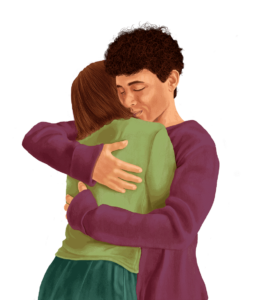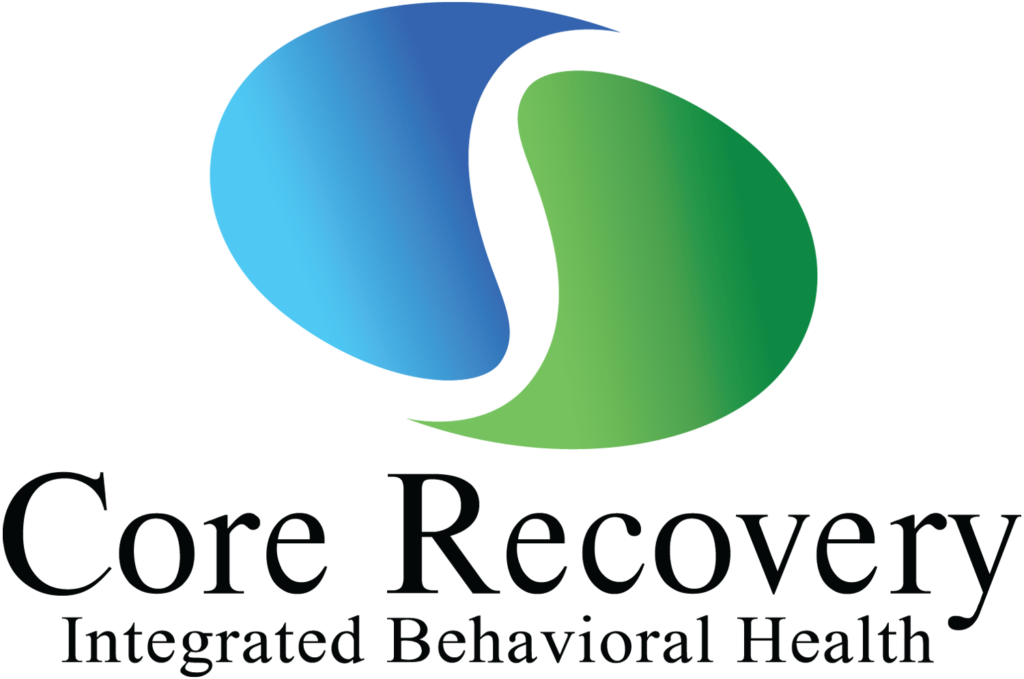Post-Traumatic Stress Disorder (PTSD) and Acute Stress Disorder are two psychological conditions that can arise after experiencing or witnessing a traumatic event. While they may share some similarities, it is crucial to understand their differences. Recognizing these distinctions is essential for accurate diagnosis and effective treatment. This blog will delve into the contrasting features of PTSD and Acute Stress Disorder, exploring their diagnostic criteria, symptoms, triggers, treatment approaches, and long-term effects. By understanding these disorders comprehensively, we can better comprehend their impact on individuals’ lives and ensure appropriate support and care. Let’s embark on this journey of understanding and discovery to shed light on PTSD vs. Acute Stress Disorder.
What Is PTSD?
Post-Traumatic Stress Disorder (PTSD) is a debilitating mental health condition that affects individuals globally, with millions of people affected. While it is often linked to military veterans, PTSD can develop in anyone who has experienced or witnessed a traumatic event. This disorder can manifest through various symptoms, including intrusive memories, nightmares, flashbacks, hypervigilance, and emotional distress. The causes of PTSD vary but commonly include experiences such as combat exposure, sexual assault, natural disasters, or car accidents. Fortunately, several effective treatment options are available for individuals diagnosed with PTSD, including psychotherapy, medication, and holistic approaches like yoga or meditation. Seeking professional help is crucial for those struggling with PTSD to regain control over their lives and find healing and recovery.
What Is Acute Stress Disorder?
Acute Stress Disorder (ASD) is a psychological condition that can manifest shortly after experiencing a traumatic event. Although it bears similarities to Post-Traumatic Stress Disorder (PTSD), ASD is distinguished by its rapid onset of symptoms. Individuals with ASD may experience various symptoms, including intrusive thoughts, flashbacks, avoidance behaviors, and heightened anxiety. The causes of ASD can vary, but they often involve exposure to a life-threatening or distressing event such as a natural disaster, physical assault, or car accident. It is important to seek professional help if you suspect you or someone you know may be experiencing ASD, as early intervention and treatment can greatly improve long-term outcomes. Available treatment options for ASD typically include techniques such as cognitive-behavioral therapy (CBT) and eye movement desensitization and reprocessing (EMDR), which aim to alleviate symptoms and promote recovery.
Key Differences Between PTSD And Acute Stress Disorder
Post-Traumatic Stress Disorder (PTSD) and Acute Stress Disorder (ASD) are closely related mental health conditions that can develop after experiencing a traumatic event. While they share some similarities, it is essential to understand the key differences between these disorders to ensure accurate diagnosis and appropriate treatment. This article will explore and highlight the distinctions between PTSD and Acute Stress Disorder.
Timeframe and Duration
- PTSD: PTSD is characterized by symptoms that persist for over a month. These symptoms can develop immediately after a traumatic event or appear months or even years later.
- Acute Stress Disorder: Acute Stress Disorder, on the other hand, is diagnosed when symptoms occur within three days to one month following the traumatic event.
Severity of Symptoms
- PTSD: PTSD symptoms are typically more chronic and severe, significantly impacting a person’s daily life. They can include intrusive memories, flashbacks, nightmares, avoidance behaviors, hypervigilance, and negative changes in mood and cognition.
- Acute Stress Disorder: While ASD symptoms may overlap with PTSD symptoms, they are usually more short-lived and less intense. These symptoms may still disrupt daily functioning but diminish as time progresses.
Triggering Events
- PTSD: PTSD can be triggered by a wide range of traumatic events, such as combat exposure, physical or sexual assault, natural disasters, accidents, or witnessing a violent incident. The event is usually of a more chronic or repeated nature.
- Acute Stress Disorder: ASD is typically triggered by a single traumatic event, often involving a threat to one’s physical integrity, such as a car accident, assault, or natural disaster.
Diagnosis Criteria
- PTSD: The diagnostic criteria for PTSD include exposure to a traumatic event, intrusive symptoms, avoidance behaviors, negative mood changes, and hyperarousal. These symptoms must persist for at least one month and cause significant distress or impairment.
- Acute Stress Disorder: ASD diagnosis requires exposure to a traumatic event, dissociative symptoms, intrusive symptoms, avoidance behaviors, and marked anxiety. Symptoms must persist for at least three days and resolve within one month.
Treatment Approach
- PTSD: Treatment for PTSD often involves a combination of therapy approaches, such as cognitive-behavioral therapy (CBT), Eye Movement Desensitization and Reprocessing (EMDR), and medication when necessary. It focuses on managing symptoms, processing trauma, and promoting healthy coping mechanisms.
- Acute Stress Disorder: ASD treatment also emphasizes therapy, particularly trauma-focused interventions, such as trauma-focused CBT and brief psychodynamic therapy. The aim is to alleviate distress, prevent the development of chronic PTSD, and support recovery.
How Are Ptsd And Acute Stress Disorder Similar?
Post-Traumatic Stress Disorder (PTSD) and Acute Stress Disorder are closely related mental health conditions that can arise after experiencing a traumatic event. While they have distinct diagnostic criteria and durations, there are several areas where these disorders exhibit similarities. This article will explore the commonalities between PTSD and Acute Stress Disorder, focusing on overlapping symptoms, shared risk factors, potential triggers, and similar treatment approaches.
Overlapping Symptoms and Experiences
PTSD and Acute Stress Disorder have overlapping symptoms that can greatly affect an individual’s daily life. Intrusive memories of the traumatic event, such as recurring thoughts or nightmares, can disrupt sleep and trigger distress. Avoidance behaviors, where individuals purposefully avoid reminders of the trauma, may lead to isolation and limitations in daily activities. Negative thoughts and mood changes, including guilt, shame, or emotional numbness, can impact relationships and overall well-being. Additionally, hyperarousal symptoms like heightened anxiety, being easily startled, and difficulty concentrating can interfere with work or social interactions. Recognizing and addressing these shared symptoms is essential to support individuals in their journey toward healing and maintaining a healthy and functioning life.
Shared Risk Factors and Potential Triggers
Similar risk factors influence both PTSD and Acute Stress Disorder. The severity of the traumatic event plays a crucial role, as more severe or life-threatening events increase the risk of developing these disorders. Additionally, individuals who have experienced prior trauma may be more susceptible to developing PTSD or Acute Stress Disorder. The availability and strength of social support systems also play a significant role, as limited support networks can contribute to their development. Furthermore, co-occurring mental health conditions, such as anxiety or depression, can increase vulnerability to PTSD and Acute Stress Disorder. Recognizing these shared risk factors is essential for understanding the potential development of these disorders and tailoring treatment approaches accordingly.
Similar Treatment Approaches
Treatment for PTSD and Acute Stress Disorder involves comprehensive approaches to alleviate symptoms and enhance overall well-being. Psychotherapy, including CBT, EMDR, and exposure therapy, is effective in helping individuals process trauma and develop coping strategies. Medications such as SSRIs can address depression, anxiety, and sleep issues. Supportive therapies like art therapy, mindfulness, and relaxation techniques complement treatment by promoting emotional expression, stress reduction, and self-awareness. Treatment plans should be tailored to each individual, considering their unique experiences. A multidisciplinary approach combining different therapies ensures comprehensive care and support for those dealing with PTSD and Acute Stress Disorder.
Treatment And Recovery
Living with PTSD (Post-Traumatic Stress Disorder) and Acute Stress Disorder can be challenging, but recovery is possible with the right treatment and support. This article explores various therapeutic options, the importance of early intervention, and promoting resilience and coping strategies for individuals with these disorders.
Cognitive Behavioral Therapy (CBT)
Cognitive Behavioral Therapy is a widely recognized and effective treatment for PTSD and Acute Stress Disorder. It focuses on identifying and modifying negative thought patterns and behaviors associated with traumatic experiences. CBT helps individuals understand the connection between their thoughts, emotions, and behaviors, empowering them to develop healthier coping mechanisms and responses to triggers.
Eye Movement Desensitization And Reprocessing (EMDR)
EMDR is a specialized therapy that targets traumatic memories and associated distressing emotions. By guiding individuals to focus on specific memories while simultaneously engaging in bilateral stimulation (such as eye movements or tapping), EMDR facilitates the reprocessing of traumatic experiences. This therapy helps reduce those memories’ emotional intensity and negative impact, promoting healing and resolution.
Medication Options
Medication may be prescribed in combination with therapy for managing symptoms of PTSD and Acute Stress Disorder. Antidepressants, particularly selective serotonin reuptake inhibitors (SSRIs), are commonly prescribed to alleviate anxiety, depression, and intrusive thoughts. Working closely with a healthcare professional is important to determine the most suitable medication and dosage.
Importance Of Early Intervention And Seeking Help
Early intervention plays a crucial role in treating PTSD and Acute Stress Disorder. Recognizing symptoms and seeking help promptly can prevent the disorders from worsening and significantly impacting daily life. It is essential to reach out to mental health professionals specializing in trauma to receive an accurate diagnosis and appropriate treatment recommendations.
Promoting Resilience And Coping Strategies
In addition to professional treatment, promoting resilience and developing coping strategies are vital for long-term recovery. Some effective strategies include:
- Building a strong support system: Surrounding oneself with understanding and supportive individuals can provide emotional validation and encouragement.
- Self-care practices: Engaging in activities that promote relaxation, such as exercise, mindfulness, and creative outlets, can help manage stress and improve overall well-being.
- Stress management techniques: Learning techniques like deep breathing exercises, progressive muscle relaxation, and meditation can help reduce anxiety and promote emotional regulation.
- Establishing healthy routines: Creating structure and maintaining a regular sleep schedule, nutritious diet, and balanced lifestyle can support mental and emotional well-being.





